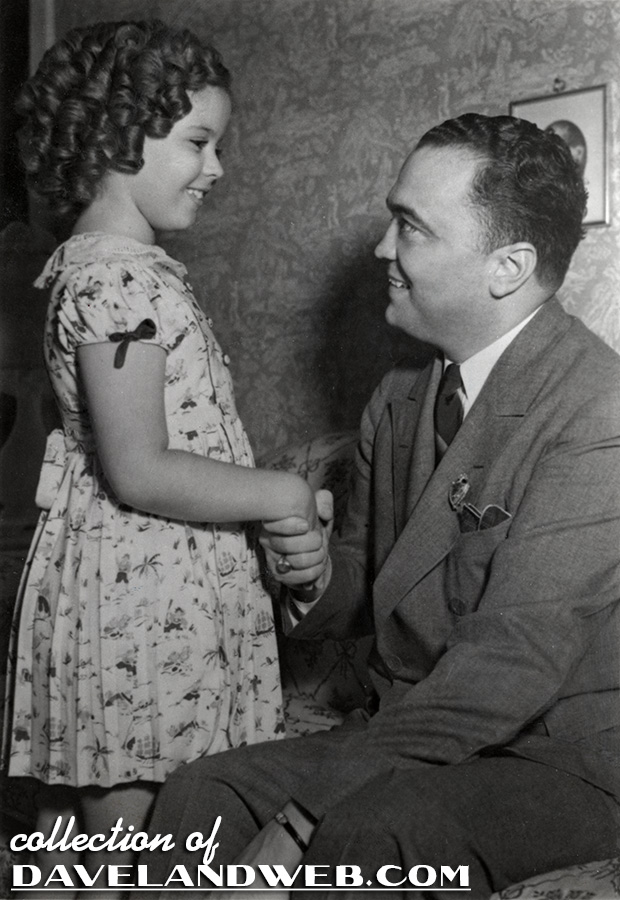
As probably the most famous person of the 1930s, actress Shirley Temple made a number of interesting acquaintances and friends. J. Edgar Hoover, Director of the Federal Bureau of Investigations was one. The first time she met him was when he visited her at her 20th Century-Fox studio bungalow/cottage in September 1937. From Shirley’s autobiography Child Star:
Nine men had appeared at our cottage gate, each wearing a snap-brim hat and with eyes slitted and stern. J. Edgar Hoover entered alone, a suddenly smiling man with dark wavy hair, while the others remained outside. “I know about you,” I said approvingly, “from ‘Gangbusters’ on radio.” Hoover looked pleased. “And I’ve heard about your police department.” “Do you have a pistol?” I asked. “No, but I brought you this.” He opened a finger-sized leather bag. “A Minox camera, just like G-men use to take secret pictures.” “You should have brought me a tommy gun,” I replied. “Instead I’ve come to get your fingerprints,” he said, laying out a card and ink pad on the tabletop. “Get up on my lap.” During the early 1930s big-time white-collar crime was minor, drug traffic tiny, and both blackmail and brothels regarded as local problems. Brutal kidnappings, however, had multiplied into an epidemic and bank robberies flourished like weeds. Into this freewheeling maze of crime and corruption stepped Hoover, fresh from cleaning out the politicized and demoralized old Investigative Bureau of the U.S. Department of Justice. Now he had become the single-minded personification of the new Federal Bureau of Investigation, his job and his vanity.…As he inked and rolled my thumb in its allotted square, I asked, “Are you married?” “No, I live with my mother,” he replied. “Then I’ll kiss you,” which I did—the start of a long, close friendship.
Shirley saw Hoover again during her Cross Country vacation in the summer of 1938. Below are shots of her and Hoover as he took her around the Federal Bureau of Investigation Headquarters in Washington, D.C. on June 24.
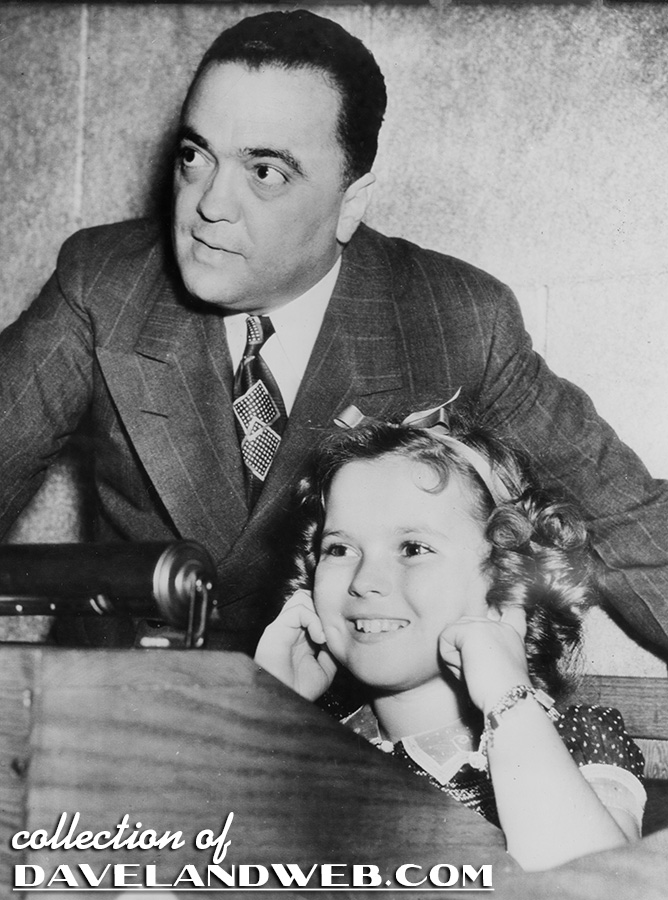
Shirley peers intently at the display case that Hoover is showing her. On the wall, it is interesting to see photos of potential kidnapping victims, the Sesvel Twins and the Dionne Quintuplets.
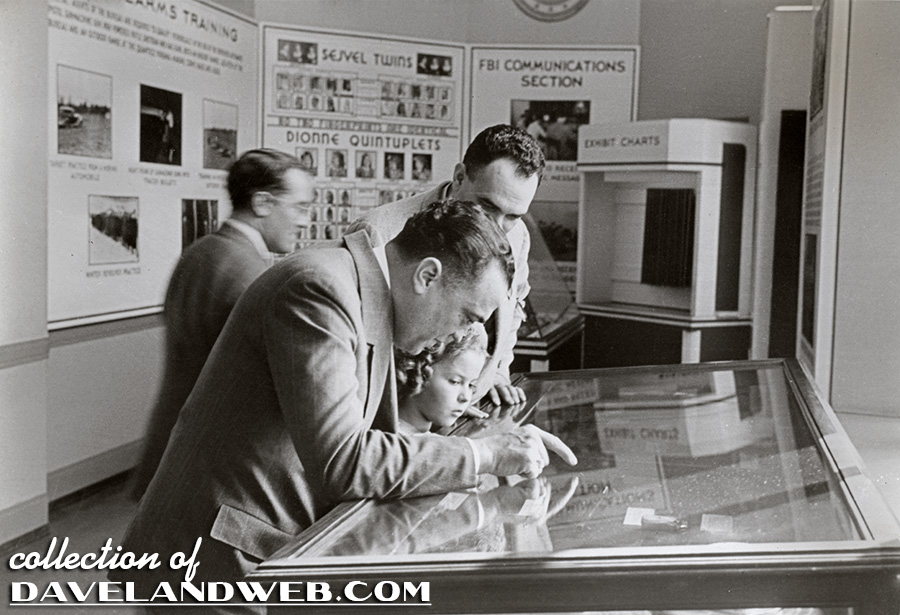
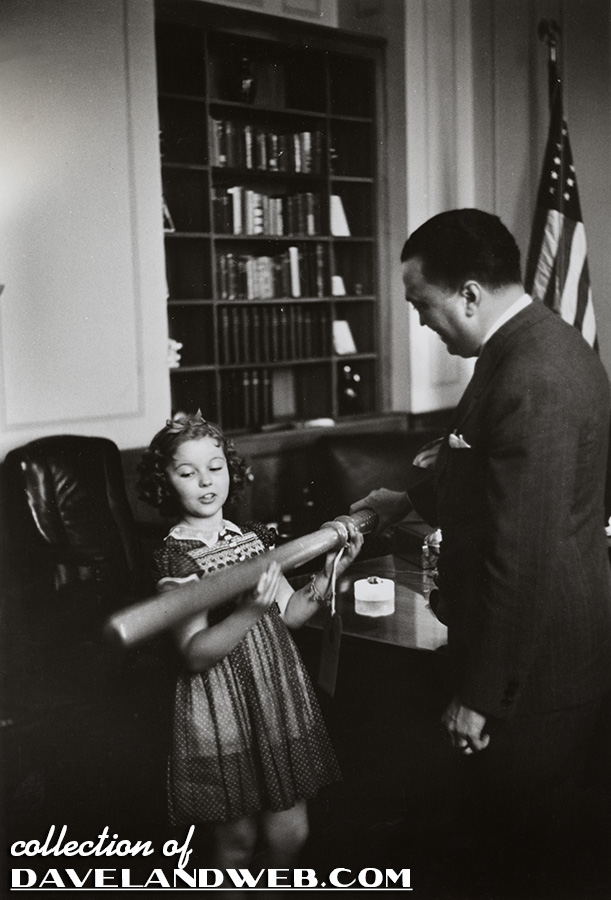
The Temple family called on Hoover over the years for help, as in this story that Shirley told in Child Star about the attack on Pearl Harbor:
On December 7, 1941, the Japanese assault on Pearl Harbor descended with unanticipated suddenness. Brother George was stationed with the Marines at Ewa Plantation, a target of Japanese air onslaught, and for days afterwards we hard nothing from or about him. In desperation, Father finally turned directly to FBI Director Hoover, who passed word to George to call home. We then learned his entire company had been invited to a Japanese wedding the evening before the surprise attack. Exuberant on sake and reeling homeward, George had finally fallen asleep on the grassy parade ground before his barracks and under a canopy of tropical stars. With dawn came Japanese dive bombers screaming down to stafe the buildings, and setting his mess hall afire. George had watched the horrifying spectacle from mid-field, propped up on his elbow.
On January 20, 1949, Hoover gifted Shirley a very “special” item. The occasion of this gift was the inaugural parade for President Harry S. Truman. As Shirley later recalled:
He opened my purse and dropped in a tear-gas gun disguised as a black fountain pen. Not a toy and not available to the general public, he warned, and cautioned me on its use, his face stern and inro-jawed. Under no circumstances reveal where I had obtained it, and never point it unless ready to fire. It was the first time I had walked around with a loaded gun of any sort, and I relished the feeling.
Below is a shot of Shirley at Truman’s Inaugural Ball; the dress she wore that night was auctioned off by Theriault’s in 2015 and sold for $950.
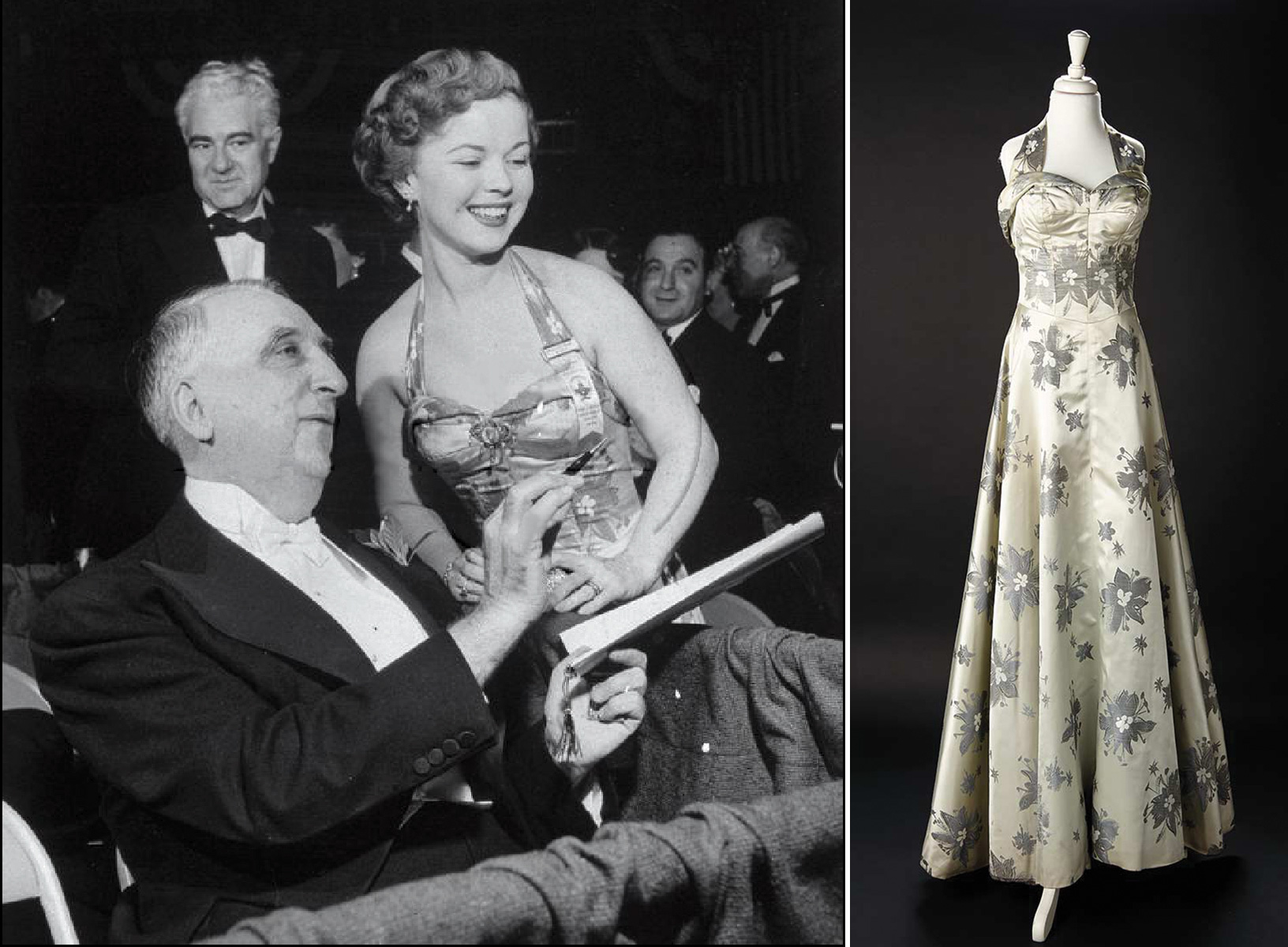
From the catalog description:
Of very heavy weight silver satin with interwoven grey and white brocade design, the floor-length gown was designed to be worn strapless or with the detachable straps. The fitted bodice has unusual seaming to accentuate the woven flowers, and the flared skirt falls in deep folds to the floor. Included with gown are two vintage photographs, one being a color transparency. The dress was clearly a favorite of Shirley Temple for various social and publicity occasions. Most notably, in January 1949, Shirley wore the gown to the inaugural ball of Harry S. Truman. On September 23, 1949 a photograph of Shirley in this gown was featured on the cover of Cine Review magazine, and in a May 1949 issue of Movie Life she is shown gaily dancing a Mexican folk dance at a party for Errol Flynn.
When Shirley was dating Charles Black, the man who would become her second husband, she was still leery from her first marriage. She called on Hoover to do a background check to make sure everything on Charles was above board. All checked out and the two wed on December 26, 1950, remaining together until his death in 2005.
See more Shirley Temple photos at my main website.

No comments:
Post a Comment